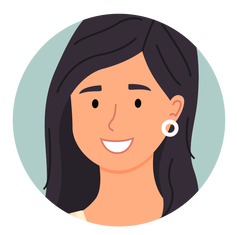By Ilene Naomi Rusk, PhD, November 2020Providing a sense of security along with a safe environment and acknowledging a child’s feelings are very basic but key factors in supporting their mental wellbeing at home. All children need to know that they are safe and able to openly express their sentiments. However, their social, emotional, and physical worlds need to first and foremost be regulated by the primary caregiver (e.g. parent, guardian, grandparent) that lives with the child. While these basic tenets apply to every youngster, the difficulties can arise when a child or teen has repeated tantrums, anger outbursts, unpredictable behaviors the parent wasn't anticipating. In some cases, the behaviors may be attributable to short-lived circumstances or reactive to a particular situation. And when a child has a condition like PANS or PANDAS the challenges to maintaining a state of mental wellness for all members of the household become even greater. As discussed in great detail here, PANS or pediatric acute neuropsychiatric syndrome and PANDAS, pediatric autoimmune neuropsychiatric disorders associated with streptococcal infections, are neurological disorders most often affecting although not limited to children. The conditions may manifest seemingly overnight with a variety of symptoms including tics, obsessive compulsive behavior, eating disorders/refusal of food, anxiety and irritability, poor academic performance and more. While primarily a clinical diagnosis, and one that is unfortunately often missed, there is now testing available that can help confirm these diagnoses. The neural processes behind emotions. The brain develops from the bottom up. Its functions can be simplified by breaking it into three parts or regions: the primitives (reptilian); the limbic brain; and the cerebral cortex. The reptilian brain is rigid and simply responsible for heart rate, breathing, body temperature and balance. The limbic brain processes emotion and threat to our system and activates emotional arousal as necessary. The limbic system has such a fast and powerful alarm system for threat that when activated it overrides all other brain activity. Additionally, it has developed memory systems that store vast amounts of information from survival, shame or stress experiences without having to bring any of it to consciousness! The emotional limbic brain dominates and influences what is considered rational and intelligent thought. The most evolved area is the cerebral cortex, which governs our more complex thinking. It specifically produces insight, judgement, imagination and creativity, thinking, planning and problem solving. We want the cortex to operate well, however, its optimal functioning depends and relies on the health of our emotional brain or limbic system. For the cerebral cortex to do its work of thinking, creating and reacting sensibly, the emotional brain must be in good health or in balance. This balance we strive for between the cortex and the limbic system is the hallmark of being resilient.  All children have less control over their emotions than adults because the axons that send information from the cortex to the limbic system are not yet fully developed. In children with neuropsychiatric illness the amount of emotional control they have is even less. In children with PANS/PANDAS, OCD or developmental trauma, the health of the emotional brain is impacted by always being in “threat response mode”, whether real or perceived. As a result, the brain overreacts. Inflammation or other immune reactions, which are physiological manifestations, can add to this threat response. PANS and PANDAS children can become angry, have unpredictable outbursts and are often oppositional, their primitive brains are “online” much of the time, in perpetual threat reactivity and literally ready to pounce. The “brain on fire” term really does illustrate what happens to the brains of these children in the wake of constant autoimmune inflammation. Supporting a child’s emotional wellbeing when the brain is under attack. One of the first steps parents can use to help any child’s strong emotions and behavioral changes is to take care of their own emotional and cognitive state, and attune to their child. Trust is often broken in the relationship between a disruptive child and their parents. The key to building trust is to promote presence so parents, so even when they themselves are triggered, have healthier relationships with their kids if they stay connected and in relationship with the child. The social engagement systems of our limbic brain governs our ability to relate effectively and meaningfully to one another, making this is an important area for parents to focus on. There are some techniques and skills that follow, but the most enduring thing you can do to help calm the stormy emotional seas of a distressed child or teen is to connect with them, especially when you think it makes no sense to connect. To connect with them means to attune: to pay attention to your state and try to accept it fully and with care the state of your child so that you feel connected to yourself and to your child, simultaneously. When there are distressing behaviors happening it can be hard to attune, but radical self-acceptance, and self-compassion will help. Try to remember that an outburst will end, and that outbursts won’t still be happening when the child is older The sensations of emotions, or somatic markers, relate to the intensity of our emotional state more so than the accompanying thought. These markers identify the emotional meaning of our present moment and inform our conscious and unconscious brains about our state of ill or well-being. They reflect the emotions related to danger and the need for self-protection and recruit the muscles and viscera for “fight or flight.” Parents can start to look at somatic markers in themselves as cues for anger, helplessness and other emotions. They also can engage in psychoeducation with their children or teens that promotes self-awareness and being emotionally informed to build understanding of bodily cues. Here are some tips from Dialectical Behavior Therapy (DBT) which have been shown to help parents and caregivers to regulate themselves so that they are calm and resourced before they interact with their child. Parents may find it beneficial as well as cost-effective to learn these skills in a group setting with other parents (or other primary caregivers for the child). S.T.O.P. Skill Stop. Don’t just react. Stop! Freeze! Do not move a muscle! Your emotions may try to make you act without thinking. Stay in control! Take a step back. Take a step back from the situation. Take a break. Let go. Take a deep breath. Do not let your feelings make you act impulsively. Observe. Notice what is going on inside and outside you. What is the situation? What are your thoughts and feelings? What are others saying or doing? Proceed mindfully, act with awareness. In deciding what to do, consider your thoughts and feelings, the situation, and other people’s thoughts and feelings. Think about your goals. Ask your wise mind “which actions will make it better or worse?”  Half Smile. Accept “reality”, or the current situation, with your body by tensing and releasing its different parts such as your face, neck and shoulder muscles. Do this with a half-smile, slightly upturning your lips and relaxing your face. Remember that a tense smile may come across as a forced grin and defeat the purpose of this exercise. Try to adopt a serene facial expression, giving your body another opportunity to communicate with your brain that in this moment everything is okay. Willing Hands. There are three options for facilitating this practice: Standing - Drop your arms down from your shoulders; keep them straight or bent slightly at the elbows. With hands unclenched, turn your hands outward, with thumbs out to your sides, palms up, and fingers relaxed. Sitting - Place your hands on your lap or your thighs. With hands unclenched, turn your hands outward, with palms up and fingers relaxed. Lying down - Arms by your side, hands unclenched, turn your palms up with fingers relaxed. Remember, your hands communicate to your brain; your body connects to your mind. Holding an Ice Pack. When you put your face into cold water . . . or you put a zip-lock bag with cold water on your eyes and upper cheeks, and hold your breath, it tells your brain you are diving underwater. This causes the “dive response” to occur. (It may take 15–30 seconds to start.) Your heart slows down, blood flow to nonessential organs is reduced, and blood flow is redirected to the brain and heart. This response can actually help regulate your emotions. This will be useful as a distress tolerance strategy when you are having a very strong, distressing emotion with your child or for some other reason Paced Breathing. Breathe deeply into your belly. Slow your pace of inhaling and exhaling. Try for about five or six breaths per minute. Breathe out more slowly than you breathe in (if you inhale to a count of five then exhale to a count of seven).  Stay Connected, First and Foremost. I believe it’s critical to try to stay in relationship and attuned with your child, with your eyes, a kind smile, a hug and try to not make your child feel rejected. Attunement is key in the healthy development of babies and children. This is the foundation for a healthy attachment relationship. It starts with the parent being able to notice what their child needs in the moment and be able to soothe that child. Once parents are emotionally centered, they can offer their children some healthy opportunities to emotionally regulate themselves. Acting from a place of relative calm and inner strength is key to being able to care for your child or anyone else's needs. Here are some choices I recommend in our practice that parents can consider:
Here are a few ways to connect with your child and calm your reactive limbic systems together:
Therapeutic options.
Parents may consider having a child evaluated by an Occupational Therapist (OT) if they notice that handwriting or other fine motor skills have deteriorated. An OT or educational coach can also help with school accommodations because during treatment some children can have a difficult time with planning, organizing, learning, and attentional skills. A full neuropsychological evaluation will reveal the most specific strengths and deficits and can help with specifying the special types of learning situations that are best for that student. Cognitive and behavioral interventions are helpful options for some types of therapeutic intervention, but with children who have complex neuro-behavioral issues, particularly in PANS and PANDAS diagnoses, an attachment-oriented approach for parents is best. This can calm a child's nervous system and help them to feel safe and connected at home, when the rest of the world might feel threatening or foreign. There are many ways a parent or primary caregiver can be an integral part of every child’s emotional wellness and support brain health. Children learn from the adults who make up their “village” and the means to healing and thriving truly begin at home. Dr. Ilene Naomi Rusk is co-director of the Healthy Brain Program in Boulder, Colorado and is Director of the rehabilitation and trauma treatment programs. She has a Ph.D. from the University of Birmingham in England (Psychology, Neuropsychopharmacology), is fellowship trained in neuropsychology and has authored numerous papers in psychology, neuropharmacology and neuroscience as well as other related topics. Dr. Rusk is renowned for her integrative approach to brain health and mental health and her dedication to looking for root causes of cognitive decline and neurodegenerative disorders.
0 Comments
Your comment will be posted after it is approved.
Leave a Reply. |
AuthorDr. Suzanne Gazda, Integrative Neurology Archives
February 2024
Categories |


 RSS Feed
RSS Feed